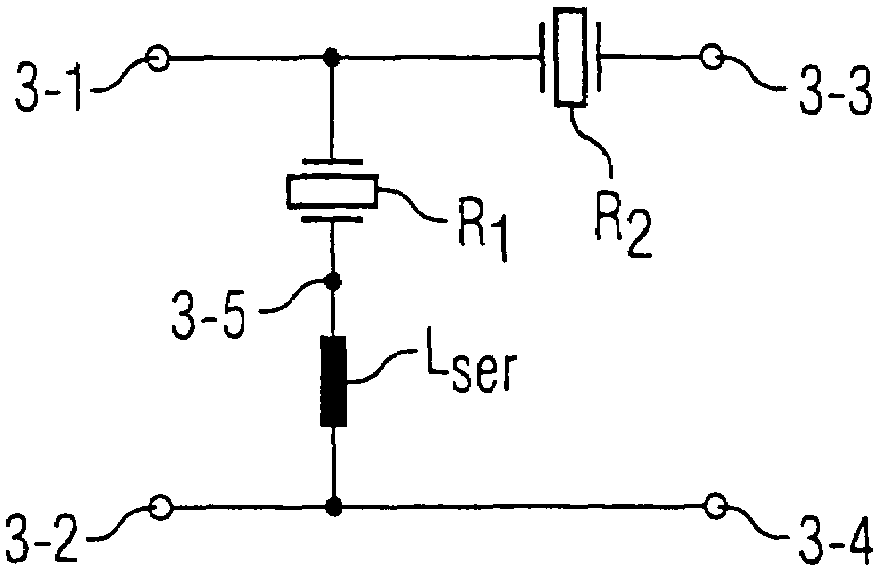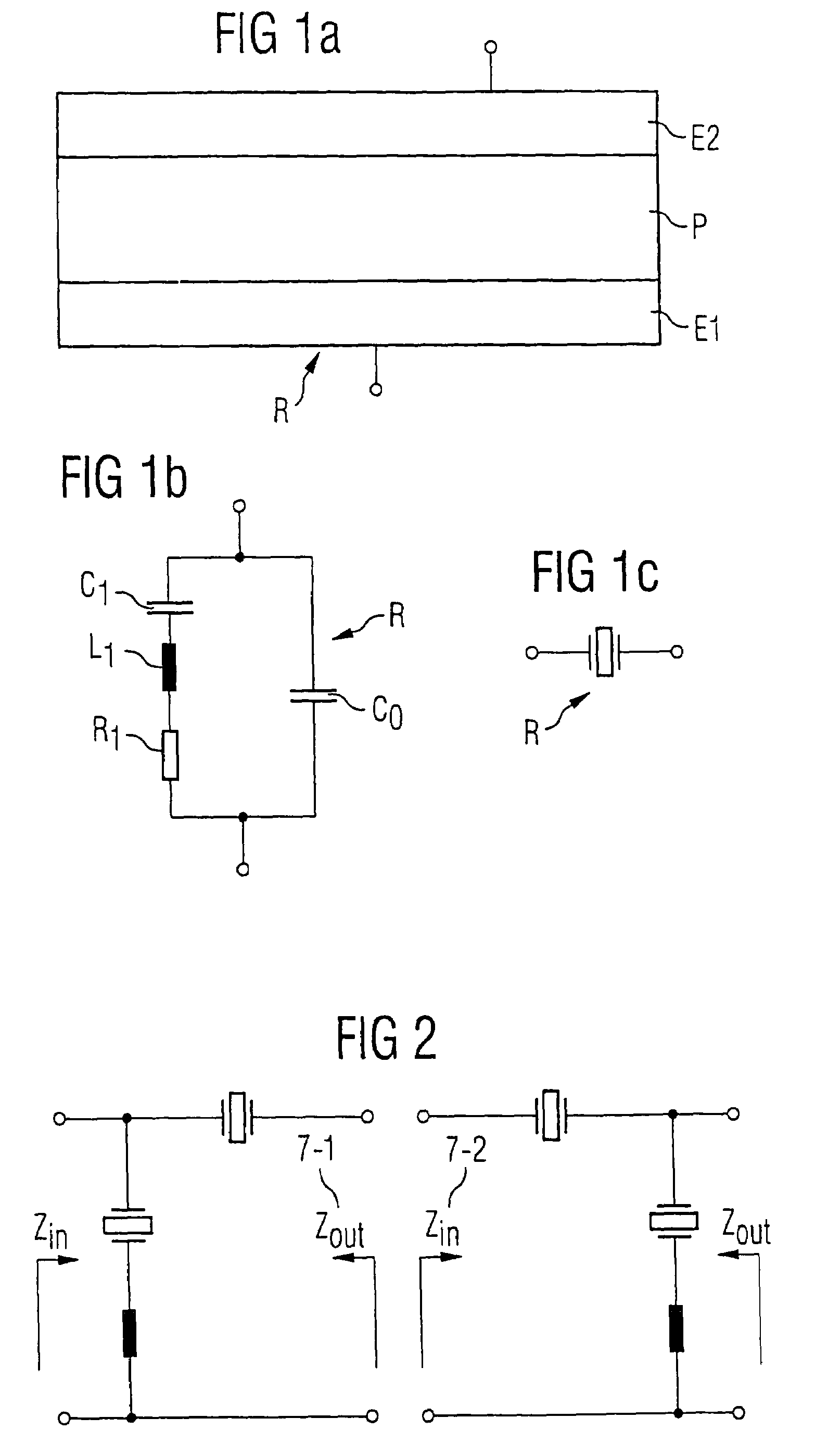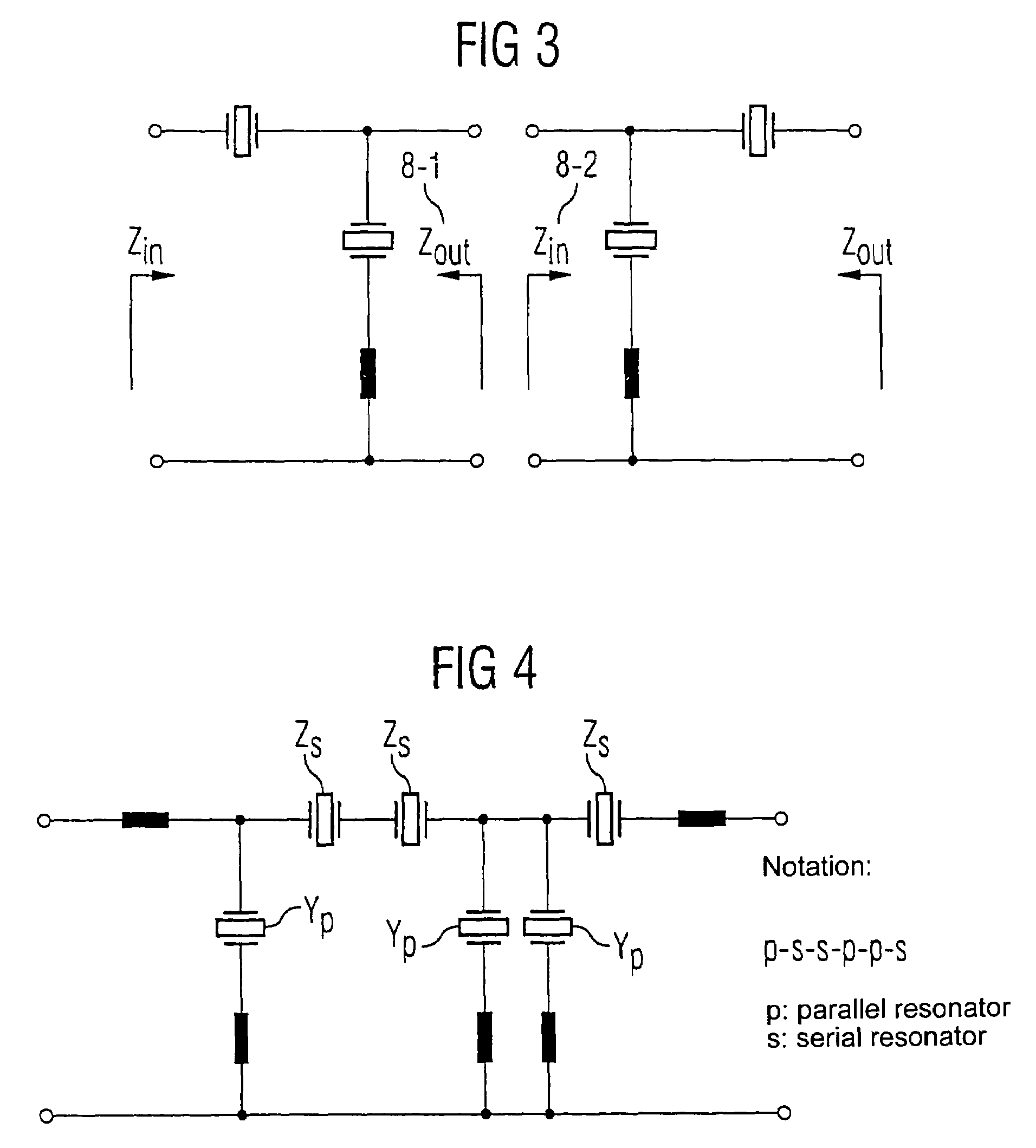Reactance filter having an improved edge steepness
a filter and steepness technology, applied in piezoelectric/electrostrictive/magnetostrictive devices, piezoelectric/electrostriction/magnetostriction machines, electrical apparatus, etc., can solve the problem of filter center of passband, filter is strongly reduced, filter cannot meet possible selection demands, etc. problem, to achieve the effect of improving the steepness, reducing the selection level, and sufficient bandwidth
- Summary
- Abstract
- Description
- Claims
- Application Information
AI Technical Summary
Benefits of technology
Problems solved by technology
Method used
Image
Examples
first exemplary embodiment
[0051]Resonators constructed as in FIG. 1a are wired together to form a reactance filter (see FIG. 1b). Each resonator comprises a first electrode layer E1, a piezoelectric layer P and a second electrode layer E2 (FIG. 1a). In FIG. 1c, the symbol standardly used for resonators is shown.
[0052]FIG. 7 shows a basic element constructed from a first resonator R1 in a parallel branch and a second resonator R2 in a serial branch. Terminals 3-1 and 3-2 form the input of the filter, and terminals 3-3 and 3-4 form the output of the filter. The parallel branch, or resonator R1 in the parallel branch, is connected with terminals 3-2 or 3-4 via a series inductance Lser, formed from the sum of the inductances of the connection to the housing ground. According to the present invention, in this exemplary embodiment resonator R1 is formed with a piezoelectric layer P made of zinc oxide, which has an electromechanical coupling constant K2eff 1, and resonator R2 is formed with a piezoelectric layer P ...
second exemplary embodiment
[0054]Again, a reactance filter is constructed having a basic element wired according to FIG. 2, and both resonators are fashioned as in FIG. 1. In contrast to the first exemplary embodiment, both resonators do comprise the same piezoelectric material for the layer P, but differ in the electrode material used for electrodes E1 and E2. While aluminum is used for resonators R1, tungsten is used as the electrode material for resonators R2. Because k2eff 2>k2eff 1 holds for the effective coupling k2eff, as a result a reactance filter is obtained whose passband curve 2 is shown in FIG. 11. It can be seen that curve 2 of the filter according to the present invention has a left edge that is set significantly steeper than the left edge of curve 1, which shows the passband response of a known reactance filter in which the same electrode material (tungsten) was used for both resonators.
[0055]FIG. 12 shows the influence of the electrode material on the impedance characteristic of a resonator. ...
third exemplary embodiment
[0056]A resonator is formed according to FIG. 13. This resonator comprises, between a first electrode E1 and a second electrode E2, made for example of aluminum, a piezoelectric layer P made for example of aluminum nitride, as well as a dielectric layer D, made for example of silicon oxide. If the layer portion of the silicon oxide layer is 16%, the coupling coefficient k2eff decreases from a value of 0.0645, determined in a resonator according to FIG. 1 having aluminum nitride as a piezoelectric layer, to a value of 0.057 for the resonator according to the present invention, as shown in FIG. 13. This latter resonator therefore has a smaller distance between the resonance and the anti-resonance frequency, and can be used in combination with conventional resonators (see FIG. 1), whereby in the reactance filter (for example according to FIG. 7) the serial and parallel resonators are formed differently, i.e., respectively according to FIG. 1 or FIG. 13.
PUM
 Login to View More
Login to View More Abstract
Description
Claims
Application Information
 Login to View More
Login to View More - R&D
- Intellectual Property
- Life Sciences
- Materials
- Tech Scout
- Unparalleled Data Quality
- Higher Quality Content
- 60% Fewer Hallucinations
Browse by: Latest US Patents, China's latest patents, Technical Efficacy Thesaurus, Application Domain, Technology Topic, Popular Technical Reports.
© 2025 PatSnap. All rights reserved.Legal|Privacy policy|Modern Slavery Act Transparency Statement|Sitemap|About US| Contact US: help@patsnap.com



